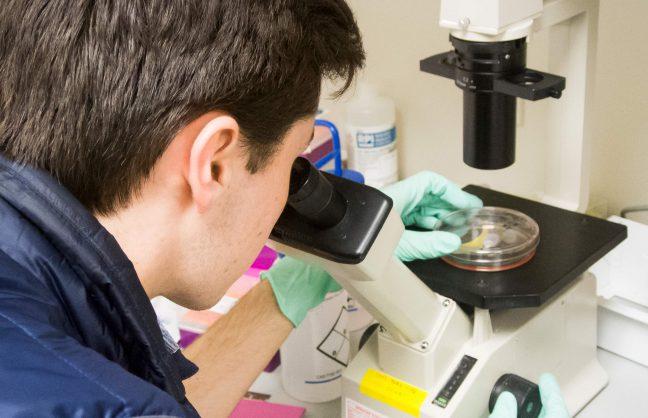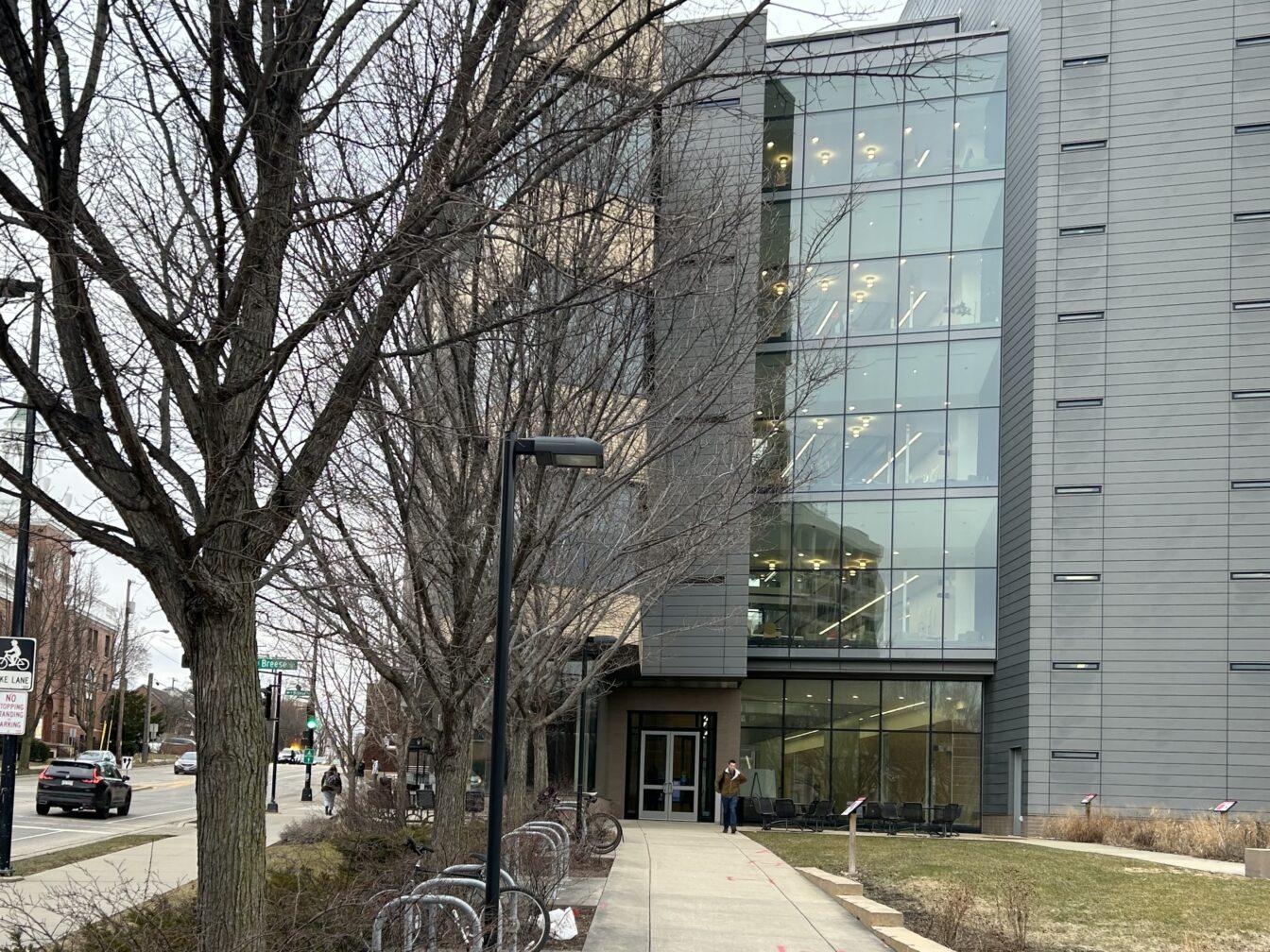At the first Wednesday Nite @ The Lab of the semester, University of Wisconsin physicist Uwe Bergmann showcased the vibrant history of scientific discoveries involving X-rays and X-ray lasers.
Presented in a hybrid in-person and virtual format, Bergmann’s Wednesday Nite @ The Lab concentrated on his international work with X-ray lasers and how the field has gotten to where it is today. Wednesday Nite @ The Lab is a weekly showcase of research at UW that is free for students and community members.
X-rays are wavelengths of light that cannot be seen by the human eye. This is because X-rays wavelengths are shorter and have a higher frequency than visible light and UV light.
X-rays were first discovered by scientist Wilhelm Conrad Röntgen. Röntgen took the world’s first X-ray image, which was of his wife’s hand. Since then, X-rays have been integral to the medical field, with over 3 million X-rays taken yearly, Bergmann said. Outside of the medical field, X-rays have been crucial to other important scientific discoveries.
When a material absorbs X-ray radiation, the rays influence the electrons within the material, Bergmann said. X-rays are a form of ionizing radiation because of their ability to pull electrons, which have a negative charge, off of atoms. This will take a previously balanced atom and turn it into a positive ion or a particle with a slightly positive charge.
The radiation can also knock an electron that was further away from the center of an atom, or on an outer electron shell, closer to the center of the atom, which emits fluorescence.
Both processes emit energy, which creates the often stark black-and-white contrast in X-ray images. X-rays also have the ability to capture microscopic objects, such as DNA and chromosomes, Bergmann explained.
This process has helped recover items that may have otherwise been lost to humanity. For example, fluorescence is responsible for restoring old writings by the famous Greek philosopher Archimedes. A Byzantine prayer book, which belonged to a woman in the 13th century, was made of recycled parchment that contained writings by Archimedes.
In order to decipher his original writings under the ink of the prayer book, X-ray beams were flashed rapidly over the parchment, Bergmann said. The unique reaction of the iron in the inks on the parchment to X-ray radiation helped scientists create an image, pixel by pixel, of the faded writings.
Michelle Nijhuis discusses conservation, its history for UW’s Science Writer in Residence program
Another interesting endeavor involving the use of X-ray was the creation of the X-ray laser. Bergmann discussed the process of how X-rays could be used to photograph and capture the nature of particles at the atomic level. He explained that the linear accelerator, or linac for short, at the Stanford Linear Accelerator Center he is affiliated with can detect specific features of a chemical sample.
Electrons are fed through a tube and accelerate to very high speeds. Then, they are undulated, or made to move in a wave motion, by magnets. This last process occurs in a synchrotron, which is a large, round structure and it creates the X-rays from the high velocity undulating electrons. The X-rays are then separated and directed towards a target, while the electrons are grounded.
Bergmann demonstrated how X-rays are an extremely versatile tool, from their use in different interdisciplinary research as well as in medicine.
The weekly labs take place every Wednesday at 7 p.m. More information about the upcoming Wednesday Nite @ The Lab can be found at science.wisc.edu.
Where will discovery take you?
















